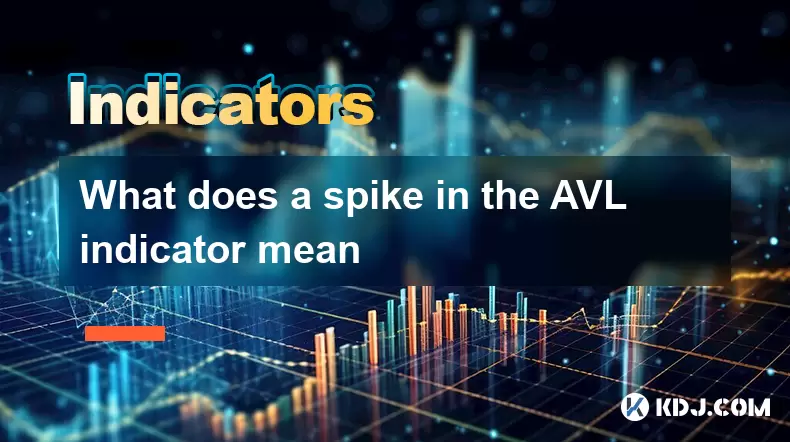-
 Bitcoin
Bitcoin $118,209.3536
1.16% -
 Ethereum
Ethereum $3,151.7546
5.98% -
 XRP
XRP $2.9277
2.35% -
 Tether USDt
Tether USDt $1.0000
0.00% -
 BNB
BNB $689.7099
1.26% -
 Solana
Solana $163.4270
1.91% -
 USDC
USDC $1.0000
0.02% -
 Dogecoin
Dogecoin $0.1983
3.74% -
 TRON
TRON $0.3008
0.51% -
 Cardano
Cardano $0.7435
2.86% -
 Hyperliquid
Hyperliquid $47.6547
-0.48% -
 Stellar
Stellar $0.4625
2.79% -
 Sui
Sui $3.9921
2.71% -
 Chainlink
Chainlink $16.0608
4.23% -
 Hedera
Hedera $0.2348
1.56% -
 Bitcoin Cash
Bitcoin Cash $496.6985
1.25% -
 Avalanche
Avalanche $21.9038
5.41% -
 UNUS SED LEO
UNUS SED LEO $8.8356
-1.88% -
 Shiba Inu
Shiba Inu $0.0...01364
5.31% -
 Toncoin
Toncoin $3.1102
4.35% -
 Litecoin
Litecoin $95.9756
3.59% -
 Polkadot
Polkadot $4.0925
5.78% -
 Monero
Monero $333.7622
-1.44% -
 Uniswap
Uniswap $9.1968
2.25% -
 Bitget Token
Bitget Token $4.6378
6.23% -
 Pepe
Pepe $0.0...01282
6.77% -
 Dai
Dai $1.0002
0.03% -
 Ethena USDe
Ethena USDe $1.0005
0.00% -
 Aave
Aave $329.9143
4.49% -
 Bittensor
Bittensor $441.4995
6.89%
What does a spike in the AVL indicator mean
A spike in the AVL indicator signals significant buying or selling pressure, but must be confirmed with price action and other tools like RSI or MACD for reliable trading decisions.
Jul 16, 2025 at 03:21 pm

Understanding the AVL Indicator
The AVL (Advanced Volume Liquidity) indicator is a technical analysis tool used in cryptocurrency trading to assess volume and liquidity dynamics within a specific time frame. It combines both volume and price movement to provide traders with insights into market sentiment and potential reversals. When traders observe a spike in the AVL indicator, it often signals significant shifts in buying or selling pressure.
This spike typically appears as a sudden increase in the height of the histogram bars on the indicator, which can be either positive (green) or negative (red). The interpretation of such a spike depends heavily on the context in which it occurs, including the prevailing trend, support/resistance levels, and other confirming indicators.
Important: A spike does not inherently indicate a bullish or bearish signal without proper context.
Interpreting a Spike in the AVL Indicator
A spike in the AVL indicator can represent several key events depending on the market conditions:
- Increased Buying Pressure: If the AVL spikes upward during an uptrend, it could suggest strong accumulation by institutional or whale investors.
- Distribution or Selling Pressure: Conversely, a sharp downward spike may indicate heavy distribution or panic selling.
- Breakout Confirmation: In some cases, a spike coincides with a breakout from a consolidation zone, providing confirmation of increased participation.
Traders must correlate these spikes with candlestick patterns and moving averages to avoid false signals. For instance, a spike near a critical resistance level might imply rejection if followed by a bearish reversal pattern like a shooting star or engulfing candle.
How to Spot a Valid AVL Spike Signal
To determine whether a spike in the AVL indicator is meaningful, follow this detailed checklist:
- Check the Time Frame: Higher time frames like 4H or daily charts are more reliable for spotting valid spikes compared to volatile 5-minute or 15-minute charts.
- Compare Volume Levels: Look at the relative volume compared to previous candles. A spike should stand out significantly in terms of volume and histogram height.
- Analyze Price Action: Does the spike align with a breakout, breakdown, or retest of a key level? This correlation increases validity.
- Use Moving Averages: Overlay moving averages like the 20 EMA and 50 EMA to see if the spike aligns with a crossover or pullback.
Tip: Use the RSI or MACD in conjunction with AVL to filter out false breakouts.
Common Misinterpretations of AVL Spikes
Many novice traders make the mistake of acting solely based on a spike in the AVL without considering broader market dynamics. Some common pitfalls include:
- Chasing Entries After a Spike: Entering a trade after a large spike has already occurred may result in poor entry points and high slippage, especially in low-cap altcoins.
- Ignoring Divergence Signals: Sometimes, the AVL may spike while the price fails to confirm, indicating hidden divergence that can lead to reversals.
- Failing to Adjust Risk Management: Even a strong spike doesn't guarantee a successful trade. Traders should always use stop-losses and position sizing.
It's crucial to remember that spikes in AVL can also occur due to short-term pump/dump activities or bot-driven volume surges, especially in lesser-known tokens.
Case Study: AVL Spike During a Bull Run
Consider a scenario where Bitcoin experiences a sharp rally after consolidating for several days. On the 4-hour chart, you notice a significant upward spike in the AVL indicator accompanied by a large green candle. Here’s how to dissect the situation:
- The spike occurs just above a major support level at $60,000.
- Volume is 3x the average of the past 20 candles.
- The RSI breaks above 50, signaling strengthening momentum.
- The MACD line crosses above the signal line, reinforcing the bullish case.
In this example, the AVL spike acts as a confluence factor rather than a standalone signal. Traders who wait for a retest of the breakout level before entering have a better risk-reward profile.
Frequently Asked Questions
Q: Can I rely solely on AVL spikes for trading decisions?
A: No. While AVL spikes offer valuable insights into volume and liquidity changes, they should always be used alongside other tools such as candlestick patterns, moving averages, and oscillators to confirm trends and reversals.
Q: What causes false AVL spikes in crypto charts?
A: False spikes can occur due to wash trading, bot-generated volume, or sudden pump/dump schemes, especially in smaller market cap coins. Always verify with order book depth and real-time trade data when possible.
Q: How do AVL spikes differ from regular volume spikes?
A: AVL incorporates both volume and price change to reflect true liquidity shifts, whereas standard volume indicators only show raw transaction volume without accounting for price impact.
Q: Should I ignore AVL spikes on lower timeframes?
A: Not necessarily, but lower timeframes like 5-minute or 15-minute charts are prone to noise and false signals. It's advisable to cross-reference any AVL spike on a lower timeframe with the higher time frame trend before making decisions.
Disclaimer:info@kdj.com
The information provided is not trading advice. kdj.com does not assume any responsibility for any investments made based on the information provided in this article. Cryptocurrencies are highly volatile and it is highly recommended that you invest with caution after thorough research!
If you believe that the content used on this website infringes your copyright, please contact us immediately (info@kdj.com) and we will delete it promptly.
- Animal Memecoins Roar Back: HEGE, BONK, and the Solana Pack Lead the Charge
- 2025-07-16 20:50:13
- Pumpfun's PUMP Token: SOL Transfers, Buybacks, and the Wild West of Meme Coins
- 2025-07-16 20:30:13
- Trump, HTX, and USDT: Riding the Crypto Wave in 2025
- 2025-07-16 20:50:13
- SPX6900, Meme Coins, and the Quest for 1000x Gains: A New Yorker's Take
- 2025-07-16 20:30:13
- Eclipse Airdrop and Token Supply: Navigating the Crypto Landscape
- 2025-07-16 18:50:13
- Solana Price, Zebec Network, and Remittix: Decoding the Crypto Signals
- 2025-07-16 18:30:13
Related knowledge

Advanced RSI strategies for crypto
Jul 13,2025 at 11:01am
Understanding the Basics of RSI in Cryptocurrency TradingThe Relative Strength Index (RSI) is a momentum oscillator used to measure the speed and chan...

Crypto RSI for day trading
Jul 12,2025 at 11:14am
Understanding RSI in the Context of Cryptocurrency TradingThe Relative Strength Index (RSI) is a momentum oscillator used to measure the speed and cha...

Crypto RSI for scalping
Jul 12,2025 at 11:00pm
Understanding RSI in the Context of Crypto TradingThe Relative Strength Index (RSI) is a momentum oscillator widely used by traders to measure the spe...

What does an RSI of 30 mean in crypto
Jul 15,2025 at 07:07pm
Understanding RSI in Cryptocurrency TradingRelative Strength Index (RSI) is a momentum oscillator widely used in cryptocurrency trading to measure the...

What does an RSI of 70 mean in crypto
Jul 13,2025 at 06:07pm
Understanding the RSI Indicator in Cryptocurrency TradingThe Relative Strength Index (RSI) is a widely used technical analysis tool that helps traders...

Does RSI work in a bear market for crypto
Jul 16,2025 at 01:36pm
Understanding RSI in Cryptocurrency TradingThe Relative Strength Index (RSI) is a momentum oscillator used by traders to measure the speed and change ...

Advanced RSI strategies for crypto
Jul 13,2025 at 11:01am
Understanding the Basics of RSI in Cryptocurrency TradingThe Relative Strength Index (RSI) is a momentum oscillator used to measure the speed and chan...

Crypto RSI for day trading
Jul 12,2025 at 11:14am
Understanding RSI in the Context of Cryptocurrency TradingThe Relative Strength Index (RSI) is a momentum oscillator used to measure the speed and cha...

Crypto RSI for scalping
Jul 12,2025 at 11:00pm
Understanding RSI in the Context of Crypto TradingThe Relative Strength Index (RSI) is a momentum oscillator widely used by traders to measure the spe...

What does an RSI of 30 mean in crypto
Jul 15,2025 at 07:07pm
Understanding RSI in Cryptocurrency TradingRelative Strength Index (RSI) is a momentum oscillator widely used in cryptocurrency trading to measure the...

What does an RSI of 70 mean in crypto
Jul 13,2025 at 06:07pm
Understanding the RSI Indicator in Cryptocurrency TradingThe Relative Strength Index (RSI) is a widely used technical analysis tool that helps traders...

Does RSI work in a bear market for crypto
Jul 16,2025 at 01:36pm
Understanding RSI in Cryptocurrency TradingThe Relative Strength Index (RSI) is a momentum oscillator used by traders to measure the speed and change ...
See all articles

























































































